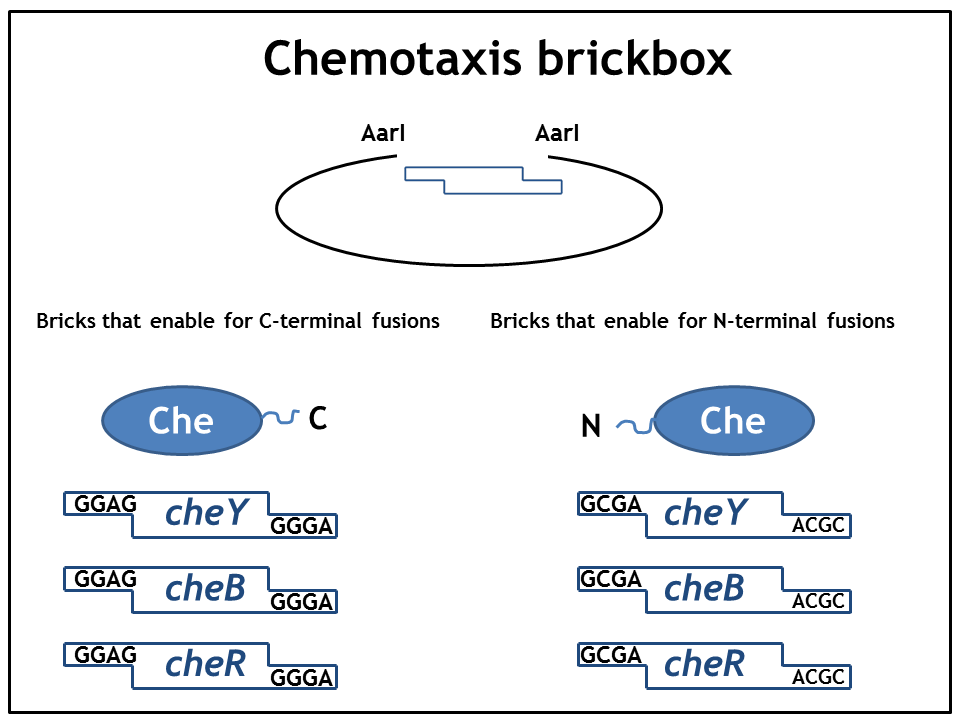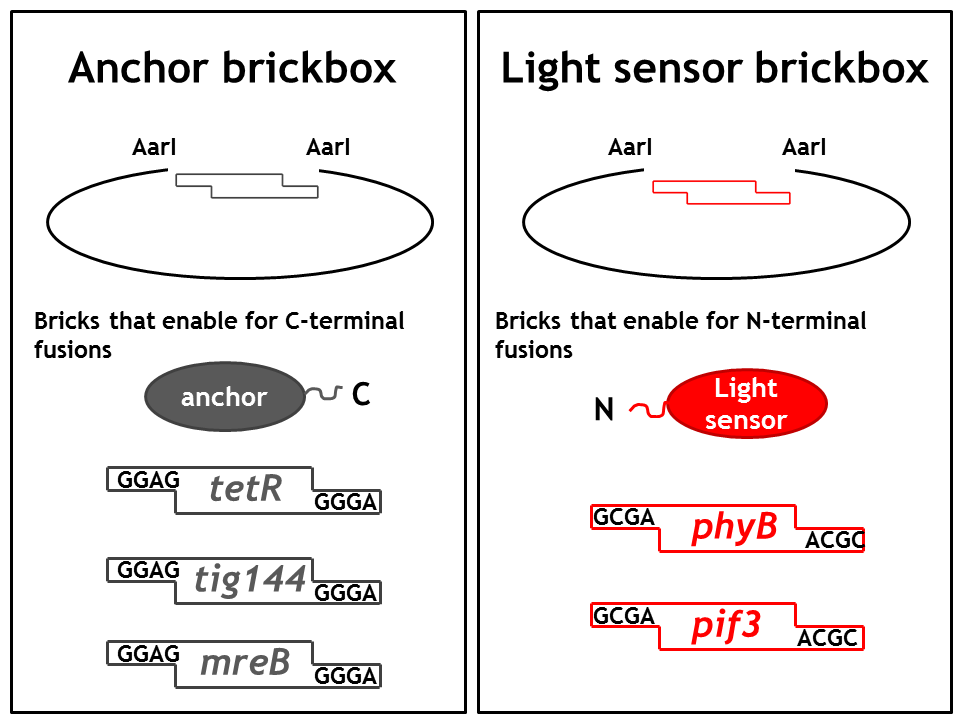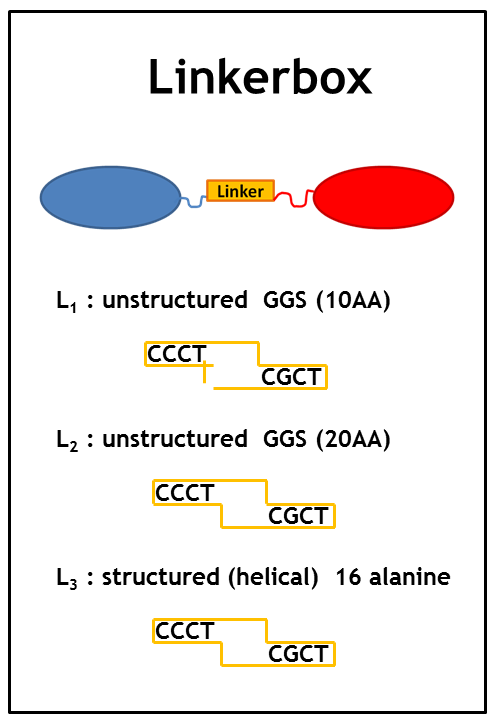Team:ETHZ Basel/Biology/Cloning
From 2010.igem.org
Cloning strategy for the construction of our Biobricks
As we planned to generate several fusion proteins with different linkers, we decided to use the cloning strategy BBF RFC28: A method for combinatorial multi-part assembly based on the Type IIs restriction enzyme AarI [1]. The advantage of this strategy is that we can clone up to 3 different inserts into one expression vector simultaneously. In the following section we give an overview of p
1. Step: Construction of brickboxes that enable for the generation of fusion proteins
Parts were generated by PCR using primers specified in the BBF RFC28 manual and subcloned into the storage vector pSEVA132 (Victor de Lorenzo's lab, KanR, pBBR1 ori) by blunt end ligation. pSEVA132 allows for blue white screening, making the generation of the brickbox parts very efficient. Generated parts were verified by AarI digest and sequencing. Due to the presence of rare codons in the sequence of PhyB and Pif3, these two genes were codon optimized and ordered from GeneArt. As the implementation of E. Lemming relies on two fusion proteins (the "anchor-light sensor" and "light sensor-che protein" fusion), two expression vectors - so called working vectors- were constructed which enable for the simultaneous expression of the two fusion proteins. Working vector 1 is a derivative of pSEVA132 conferring resistance to ampicillin and replicating with ori pBB1. Working vector 2 is a derivative of pSEVA421 expressing a spectinomycin resistance cassette and replicating with ori RK2. The gene for the repressor AraC and the corresponding ParaBAD promotor/operator sites were introduced into both vectors followed by an insert flanked by AarI-recognition sites. Digest with AarI releases the insert and generates a vector with assembly compatible overhangs.
2. Step: Assembly of fusion proteins using the generated brickboxes
The following image illustrates the assembly of a fusion protein. In the section "Implementation" you find the fusion proteins that were actually created to implement E. lemming. The decision which fusion system to implement was taken due to the in-silico predicted requirements for a working system.
 "
"







